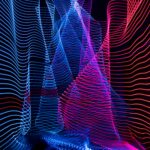Bitcoin, the first decentralized cryptocurrency, is based on a technology called blockchain. A blockchain is a decentralized, digital ledger of all transactions on the network. It is maintained by a network of computers, called nodes, that work together to validate and record transactions.
Each block on the blockchain contains a list of transactions, and once a block is added to the chain, the information it contains cannot be altered or deleted. This creates a secure and tamper-proof record of all transactions on the network.
The process of adding new blocks to the chain is called mining. Miners use specialized software and powerful computers to solve complex mathematical equations in order to create new blocks. Once a miner successfully creates a new block, it is added to the blockchain and the miner is rewarded with a certain number of Bitcoins.
This reward system is designed to incentivize miners to contribute to the network and helps to ensure that the blockchain is secure and accurate. The process of mining also helps to validate transactions on the network, as each block must be verified by a majority of the nodes before it can be added to the chain.
One of the key features of the blockchain technology is that it is decentralized. There is no central authority or intermediary that controls the network. Instead, it is maintained by a community of users who work together to validate and record transactions. This decentralized structure makes it much more difficult for governments or other entities to freeze or seize assets and makes Bitcoin a more secure and private way of transacting.
Additionally, Bitcoin also uses a technique called “cryptography” to ensure the security and privacy of transactions. Cryptography is the practice of secure communication, and it is used to ensure that only the intended recipient can read a message and that the message cannot be tampered with in transit.
In conclusion, Bitcoin, the first decentralised cryptocurrency, is based on the blockchain technology, a decentralised digital ledger of all transactions on the network. The blockchain is maintained by a network of computers, called nodes, that work together to validate and record transactions. The process of mining, in which new blocks are added to the chain, helps to ensure the security and accuracy of the blockchain, and the decentralizsed structure of the network makes it more difficult for governments or other entities to freeze or seize assets. Additionally, Bitcoin uses cryptography to ensure the security and privacy of transactions.







